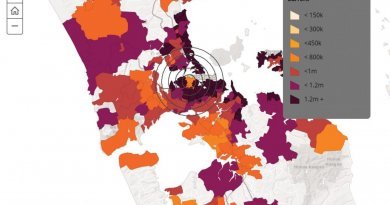Social Value: The New Currency in Construction and Infrastructure
Recent major project awards have vividly illustrated that it is no longer good enough to offer the cheapest price to win a bid – you must also show that you are contributing positively to society.
Today, non-price assessment criteria can represent anything from 30 to 50 per cent of tenders, and ‘social value’ requirements alone can be up to 15 per cent. Being able to deliver social value is therefore becoming an increasingly important aspect of competitive advantage in the industry.
However, because it’s a relatively new tender requirement, few organisations have any experience of how to do so and how to accurately measure and communicate the social value they have created. So it’s worth spending some time to understand what this important new currency in the construction industry means.
Social value is simply the ‘social impact’ any organisation makes to the lives of people affected by its activities, including those working in the organisation and living in the communities in which it operates.
Social value is becoming an increasingly important part of tenders because governments and socially responsible private clients are suddenly realising they can better leverage their construction spending to meet their own corporate social responsibility responsibilities to the communities that they serve.
Federal and state governments are also regulating and legislating for it in the form of initiatives such as the Commonwealth Indigenous Procurement Policy, the Queensland Buy Local Policy, Victoria’s Social Procurement Framework and the NSW Infrastructure Skills Legacy Program – all of which require those tendering for public projects to consider social value in their bids by supporting the employment and training of specific community groups suffering disadvantage (Indigenous people, refugees, youth at risk long-term unemployed, disabled and ex-offenders and so on).
The process by which they do this is called ‘social procurement’ which in simple terms can be either ‘direct’ or ‘indirect.’
Direct social procurement involves purchasing construction products and services directly from socially responsible businesses and social benefit organisations which trade for a social purpose. These would include, for example, social enterprises, Indigenous businesses, enterprises owned by people with disabilities, minority owned enterprises, enterprising not for profits/charities, social businesses, cooperatives, enterprising charities and local businesses.
By contrast, ‘indirect’ social procurement involves requiring business partners in existing construction supply chains to do the same through numerous mechanisms such as social clauses in employment contracts, supplier codes of practice, and responsible sourcing policies.
Through social procurement initiatives, businesses diversify their project supply chains with the dual goal of maximising both economic and social value for their shareholders, stakeholders and clients. This social value can take many forms. For example, some social procurement initiatives may be targeted at employing local businesses while others may be aimed at providing employment and training opportunities to disadvantaged groups such as the long-term unemployed, disengaged youth, ex-offenders, people with disabilities or Indigenous groups.
These outcomes can in turn translate to numerous impacts for wider society such as improved income, health and well-being and reduced crime, substance abuse and incarceration, which social impact practitioners attempt to measure, quantify and monetise using a variety of techniques such as social return on investment (SROI). However, this is controversial and often done very badly, resulting in grossly inflated claims about the social value created.
One of the immediate challenges, both within and outside the construction sector, is that the emergence of social value as a new currency in business transactions has been accompanied by considerable confusion as to what the term means. The debate around social value has become characterised by a multitude of different commentators attaching different definitions to the term and using it interchangeability with other related terms such as social benefit, community benefit, social impact, social output, social outcomes and even the broader concept of corporate social responsibility.
Although there remains no agreed international definition of social value or standard of measuring it, the following definitions are widely used and recognised by those who work in this area:
- Social inputs: resources invested in a social activity/program/intervention (financial, natural, intellectual, human, physical, social)
- Social activities: organisational activities and specific program activities which are aimed at or/and have an impact on the lives of beneficiaries
- Social outputs: the direct and tangible products and services from an organisation’s activities (such as the number of people/hours trained, or the number/hours employed)
- Social outcomes: the immediate, intermediate and long-term changes (both positive and negative) in people’s lives as a result of an organisation’s activities. These include changes to happiness, self-esteem, knowledge and skills, relationships, behaviours such as substance abuse and increased income, increased housing stability and increased security and safety and so on
- Social impact: the net outcome of the activities taking into account negative and positive effects, and various counterfactuals which include dead weight (what would have happened anyway), drop-off (reducing benefit over time), attribution (what else could have contributed to the change), displacement (what other benefits does the intervention displace/push aside), and substitution (costs for others who might have lost out).
Every construction project offers a different social value proposition, depending on a range of factors which include:
- Project size – larger projects typically present the opportunity to offer more social value than smaller projects
- Project type – economic infrastructure such as roads and rail offer enormous social value opportunities because of the many communities affected. Social infrastructure (schools, hospitals, housing and the like) offer social value by the very nature of their operations, for example in education and health
- Project location – projects in areas of low socio-economic status typically offer a higher social value proposition because of greater community needs and the opportunity to employ locally disadvantaged people
- Project design – innovative urban and building design encourages safe and healthy living and generates economic value by attracting new business to an area. The materials specified in design can be sourced from responsible suppliers which create social value in their production and the construction technologies implied through design can create or destroy employment opportunities
- Local supply chain availability – the availability of local businesses and social enterprises to contribute to the project supply chain can create employment opportunities and business for local and disadvantaged groups
- Timing (the political, social and economic environment in which a project is built) – projects built during recessions can create more social value by keeping people in work, and if the government is politically open to account for social value in its tender processes, then there is more incentive and opportunity to create social value in the project
- The client – socially responsible clients offer more incentives and opportunities for the supply chain to create social value
- Procurement approach – integrated procurement offers more in-built incentives for sustainable solutions by linking contractors and designers to end-users. Integrated procurement also offers more opportunities for stakeholders (such as building users and communities) to share and collaborate in the project outcome.
Coming to grips with the above terminology and understanding the factors that create social value is important for organisations which are having to respond to growing social procurement requirements in bids. It is also important to be proportionate, open and honest in the social value you create and not try to be everything to everyone.
The best organizations focus their limited resources on a few strategic areas which are of concern to their primary stakeholders, which align with their organisational mission, values and core business goals, which are sustainable and supportable in the long-term and where they have previous experience and competitive advantage over other organisations.
It would be wonderful to see more companies engaging in this area. Indeed, we really have no choice. There is a lot of untapped social value we can create through our pipeline of construction and infrastructure spending and both the industry and society will be better off as a result.
Source: By Martin Loosemore for Sourceable




